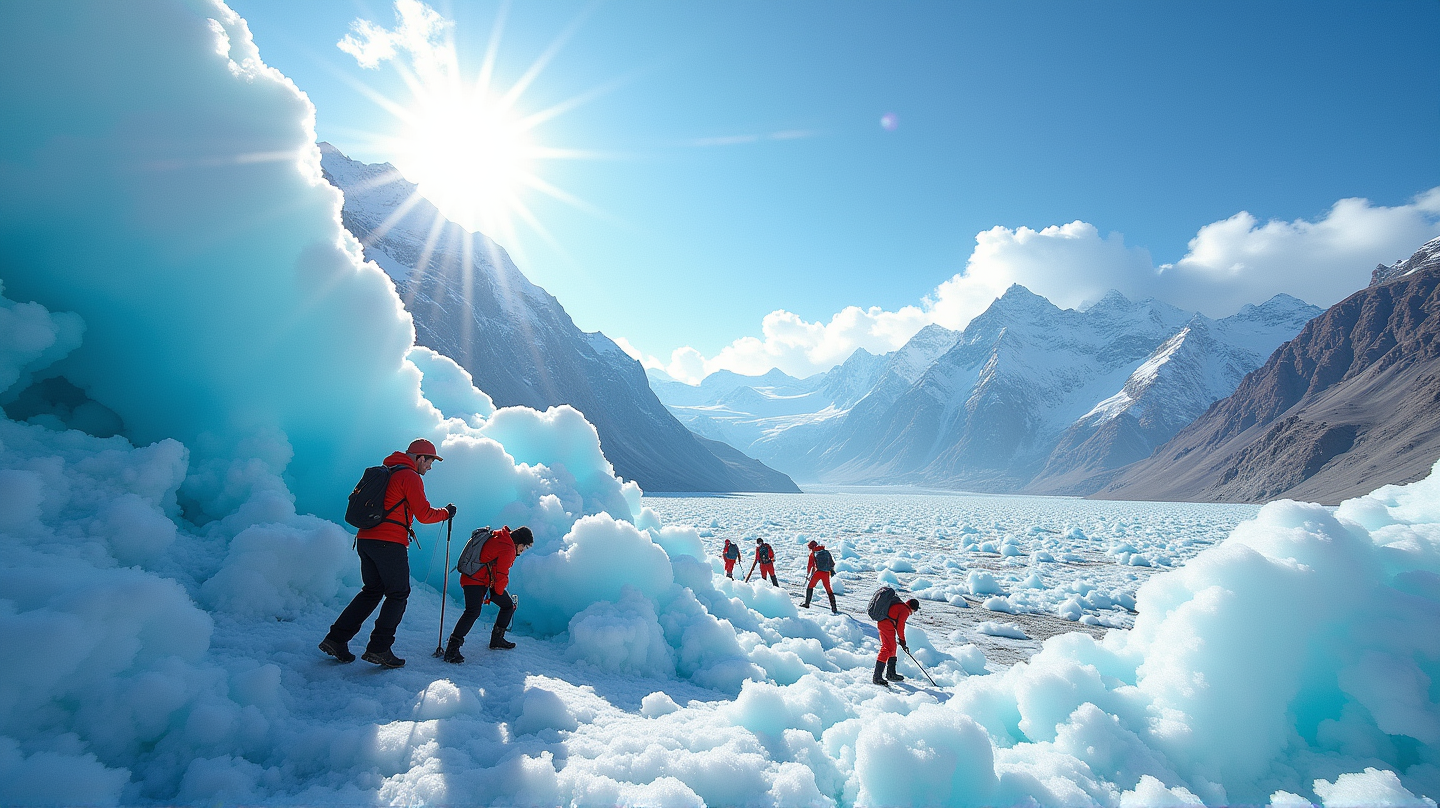Cracking Climate Secrets from the Icy Depths of Tajikistan's Kon Chukurbashi
A monumental expedition in Tajikistan unveils climate history from ancient ice, potentially dating back 30,000 years. What secrets will the Pamir peaks disclose?

A Journey into the Mountains
High on the illustrious Pamir peaks, an international team of scientists embarked on a trek that would transcend time itself. Their mission? To extract ice core samples that might hold answers to age-old climate mysteries. The expedition led them to Kon Chukurbashi, where Russian glaciologist Stanislav Kutuzov felt the gratifying tension as his drillhead pierced through rock over 100 meters below. According to Space Daily, this could be a significant leap in uncovering climate history.
The Significance of the Ice
These samples could potentially be the oldest ever extracted from the remote Pamir-Karakoram anomaly zone—a region where glaciers exhibit unexpected resistance to global warming. Layers of ice there compress centuries of dust and atmospheric records, shaping a narrative of Earth’s climatic past. The expedition, funded by renowned organizations like the Swiss Polar Institute and the Ice Memory Foundation, holds the promise of rewriting our understanding of climate evolution.
Navigating Challenges of the Frozen World
The journey was not devoid of obstacles. The diverse team, comprising Swiss, Japanese, Russian, and Tajik scientists, undertook the climb in incremental stages amidst harsh terrains. As they drilled through the chilly nights, temperatures plummeted to minus 18C. The mission required meticulous handling and transporting of the precious cores—dozens of icy cylinders—down the treacherous mountain paths.
Hints of the Past Revealed
Under the guidance of Evan Miles, the team encountered unusual phenomena within the ice. A particular section, dense with dust particles, provoked questions about historical climatic shifts. As they delved deeper, the ice exhibited a peculiar yellowish hue hinting at sediment-rich, ancient layers. Could this discoloration signal a transformative period in Earth’s climate?
A Glimpse Into Earth’s Remote Past
The final ice cores offered a tantalizing promise. Analyses suggest they might predate previous regional samples like those from Kyrgyzstan’s Grigoriev ice cap. Dr. Miles, reflecting from Dushanbe, expressed cautious optimism—hoping these ice cores, aged potentially up to 30,000 years, might unlock new chapters in the tale of Earth’s atmospheric story.
Preserving for Posterity
The race against time persists. Research efforts continue as parts of these ice cores are stored in Antarctica’s Concordia Research Station, offering a safeguard against climatic loss. Meanwhile, a portion is set for intricate molecular analysis in Japan. As scientists examine these ancient snowflakes, new revelations about Earth’s climate journey may soon emerge, reshaping our understanding of monsoons and global climatic systems.

